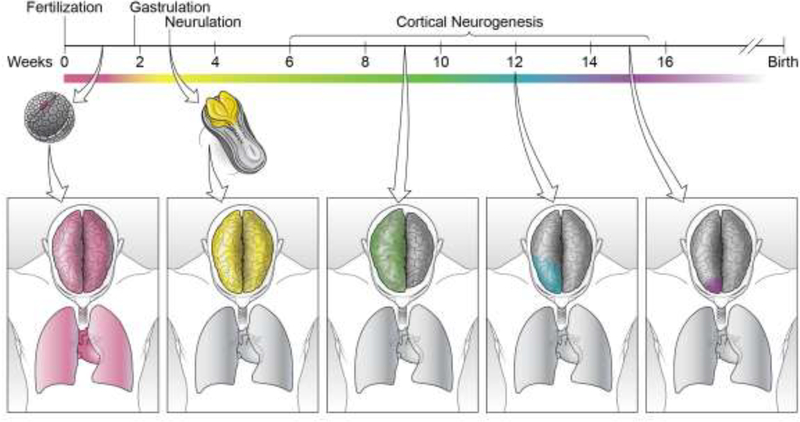Figure 1.
Developmental timing of somatic mutation acquisition determines distribution in the adult body. A somatic mutation that occurs in a developing embryo prior to gastrulation (far left, magenta) will have a broad distribution throughout the adult body and will be present in tissues derived from all three developmental germ layers. A somatic mutation that occurs during neurulation (center left, yellow) will be present throughout the central nervous system of the adult but absent in non-neural tissues. This mutation will only be detectable through studying CNS-derived DNA. Somatic mutations that occur early during cortical neurogenesis may be present in large regions of the adult brain (center, green), and may cause disease phenotypes, such as in hemimegalencephaly. The later a mutation occurs within cortical development, the more restricted its distribution will be in the adult brain. Mutations occurring during the middle of cortical neurogenesis may have varied distributions throughout portions of the cortex (center right, blue), and mutations occurring late in cortical development may have very restricted distributions within very small regions of cortex (right, purple), as in focal cortical dysplasias. These mutations will only be detected by studying DNA derived from the affected brain region.

